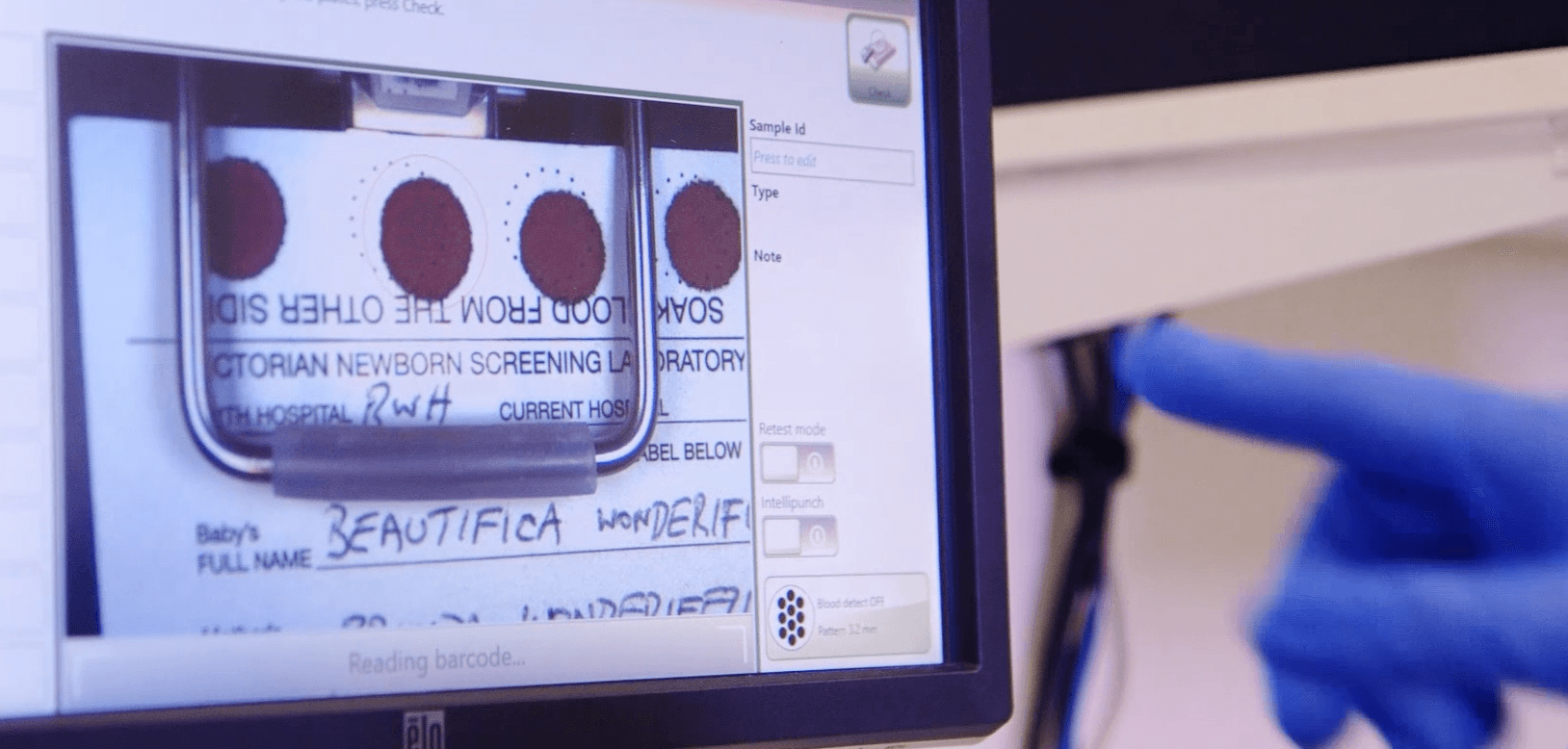Newborn bloodspot screening: the heel prick test
A/Prof. Ronda Greaves
Deputy Head of Biochemical Genetics at VCGS
What is newborn screening, and can testing a drop of a baby's blood at birth prevent the progression of rare genetic diseases?

"No child should die or suffer disabilities if a simple blood spot can prevent it." - Dr Robert Guthrie, developer of the first newborn screening test
Around 8 percent of Australians (2 million people) live with a rare disease – many of these individuals are children, and many of them remain undiagnosed. About 80 percent of rare diseases are genetic.
Could testing a drop of a baby’s blood when they are one to two days old prevent the progression of these genetic conditions?
Newborn Bloodspot Screening (NBS): the heel prick test
Dr Robert Guthrie, developer of the first newborn screening test, once said, ‘No child should die or suffer disabilities if a simple blood spot can prevent it’.
Following the commencement of newborn bloodspot screening (also known as the heel prick test) in Victoria in 1966, there have been continual advances and improvements in NBS technology.
VCGS has screened 3.6 million Victorian babies over 57 years.
What is newborn screening?
Newborn screening is a simple process that allows us to detect potential health conditions in babies before they even show any symptoms.
When your baby is around two days old, a few drops of blood are collected onto special cards. These cards are then sent to our state-of-the-art laboratory at VCGS, where our dedicated team of experts perform a series of tests to screen for certain genetic conditions.
29 conditions and counting
By 2024, VCGS will be able to screen for 31 conditions in newborns, including rare but severe medical conditions such as cystic fibrosis and hypothyroidism. About one in 1,000 babies will have one of these severe conditions.
Among the well-established conditions is phenylketonuria, commonly known as PKU. Progressive intellectual disability can result if PKU is not treated from early infancy. If detected through an NBS test, PKU can be treated and effectively managed through a low phenylalanine diet.
More conditions, more treatments
While newborn screening has been available for several decades, recent years have seen notable advancements in testing methodologies. We’ve recently seen the addition of new tests expand the scope of newborn screening.
Last year, congenital adrenal hyperplasia (CAH) was incorporated into the existing screening panel. This addition was crucial because if CAH is left untreated, newborns can become extremely unwell and may die suddenly in the early weeks of life.
With funding from the state budget, VCGS has obtained new instrumentation that has further enhanced our testing capabilities. We will continue to add more conditions in the future.
These advancements reflect our ongoing commitment to identifying and addressing new conditions.
Healthier future for the next generation
As the translational arm of Murdoch Children's, VCGS remains at the forefront of newborn screening advancements. As new conditions are added, and testing methodologies evolve, we can look forward to a future where more babies can grow up happy and healthy, ensuring a thriving world for future generations.